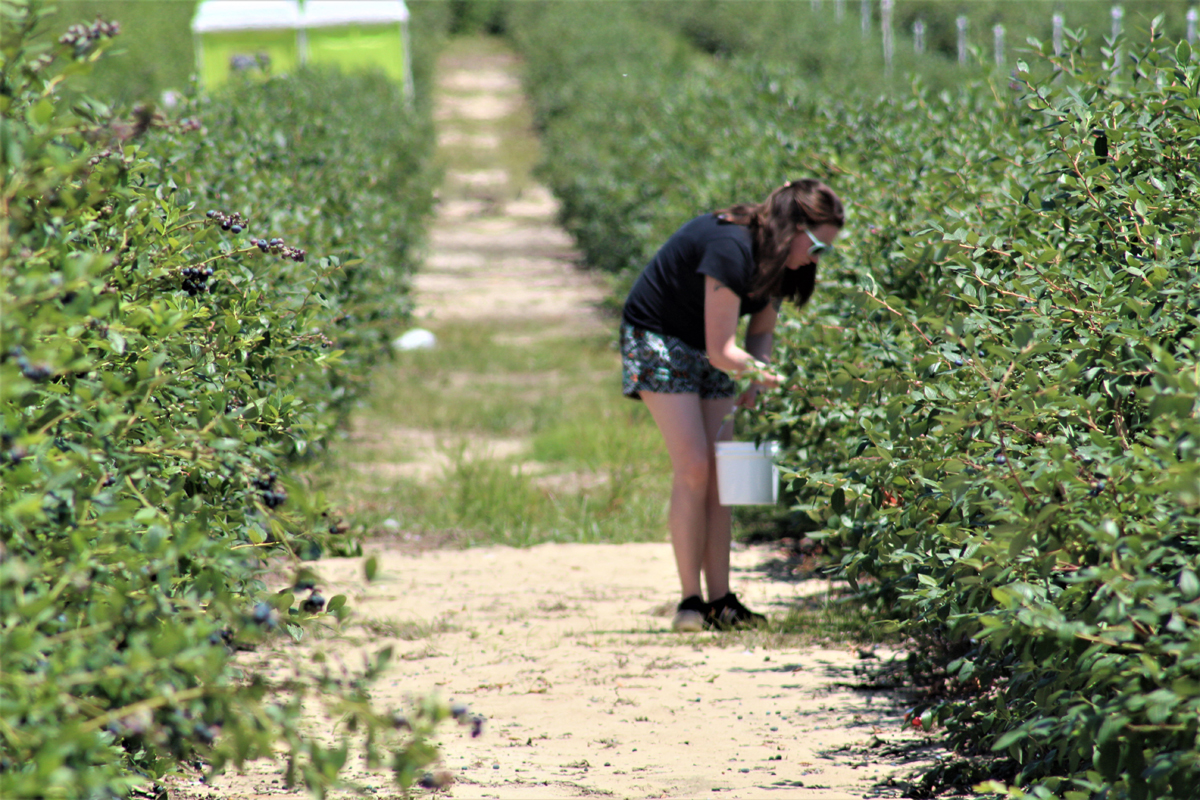Thus cultivation between rows to control weeds by using sodded middles between rows is a good practice. Cover crops between rows are called living mulches or sodded middles. Sodded middles are generally do not compete with the blueberry crop unless the between row plants and grasses are allowed to invade the rows.
Non invasive type sod should be established between the blueberry rows and maintained by mowing several times a year. You can allow some weeds and cover crops to grow in the sodded middle between the blueberry plants. For example dandelions are an acceptable weed to allow to grow. Dandelions put down a long tap-root and bring up nutrients from down deep in the soil to the surface. When these are mowed these nutrients are available to your crops.
It is critical that weeds not be permitted to make seed that can germinate later and extend the weed problem in the rows. The area between the rows can be used to make useful quantities of mulch.
A strip about 6 to 10 inches wide that is free of weeds is sometimes maintained between the border of the mulch and the sodded middle. This strip reduces the chance that the cover crop will invade the blueberry bushes, and lessens the chance of invasion of the weeds resulting in competition for water, nutrients, and sunlight with the blueberry crop. In organic systems, this ribbon strip free of weeds is maintained without using herbicides.
Sheet Mulching
The first step in the sheet mulching process is to cut down any weeds in the row of blueberry plants. Then add a layer of cardboard or newspaper that is at least ten pages thick. These should be overlapped by at least six inches to prevent the grass and weeds from growing up between the areas of overlap. Any place the newspaper are not sufficiently overlapped weeds will grow up through that area. The next step is use sawdust, pine bark, wood chips or whatever materials are accessible to you to cover the news paper. This sheet mulching is a process of building rather than disturbance. In this process instead of determining what needs to be removed from the field to build a bed, you consider what you can put in it that will smother the weeds and break down, over the course of time, and build a rich soil. The process is basically the way nature builds soil. If you use sawdust, wood chips, or grass clippings or whatever the material in a raised bed will take several months until it decomposes; in the mean time it is doing its job of controlling the weeds. Using raised beds definitely is a good way to treat the soil with the respect it deserves.
An optimum weed free zone is particularly important the first year or two while the plants are young. It should extend roughly 1.5 to 2.0 feet from the base of the plant. This means a creating a 3 to 4 foot wide, in row weed-free bed. Thus a strip of mulch about 4 feet wide under the plants with a 3 to 5 inch depth of sawdust, pine bark, wood chips, straw, or wood shavings is recommended. The mulch surface should be designed to encourage water penetration and be sufficiently course to avoid crusting.
Management of Weeds in the Rows
A common problem in blueberry culture for many growers is the control of weeds.
Blueberries are often grown on raised beds insure good drainage and reduce the incidence of the blueberry plant roots setting in water-soaked soil and thus rotting resulting in the death of the bush. Raised beds also reduce water-borne diseases. Placing cardboard or news paper on the bed and covering it with mulch as mentioned before can help suppress weed growth. Thick mulches provide some weed and disease repression, help regulate soil temperature, provide for the slow release of nutrients, and conserve moisture. Blueberry plants have shallow roots that not have root hairs and thus are not which highly efficient in water and mineral absorption this makes irrigation and mulching very important.
The Author:
Harold Stewart understands both the theory and practical applications of growing blueberries. He has a PhD in biophysics with many years of teaching, extensive hands on and research experience at the university level. He spent his growing up years on a farm growing crops and raising animals.
